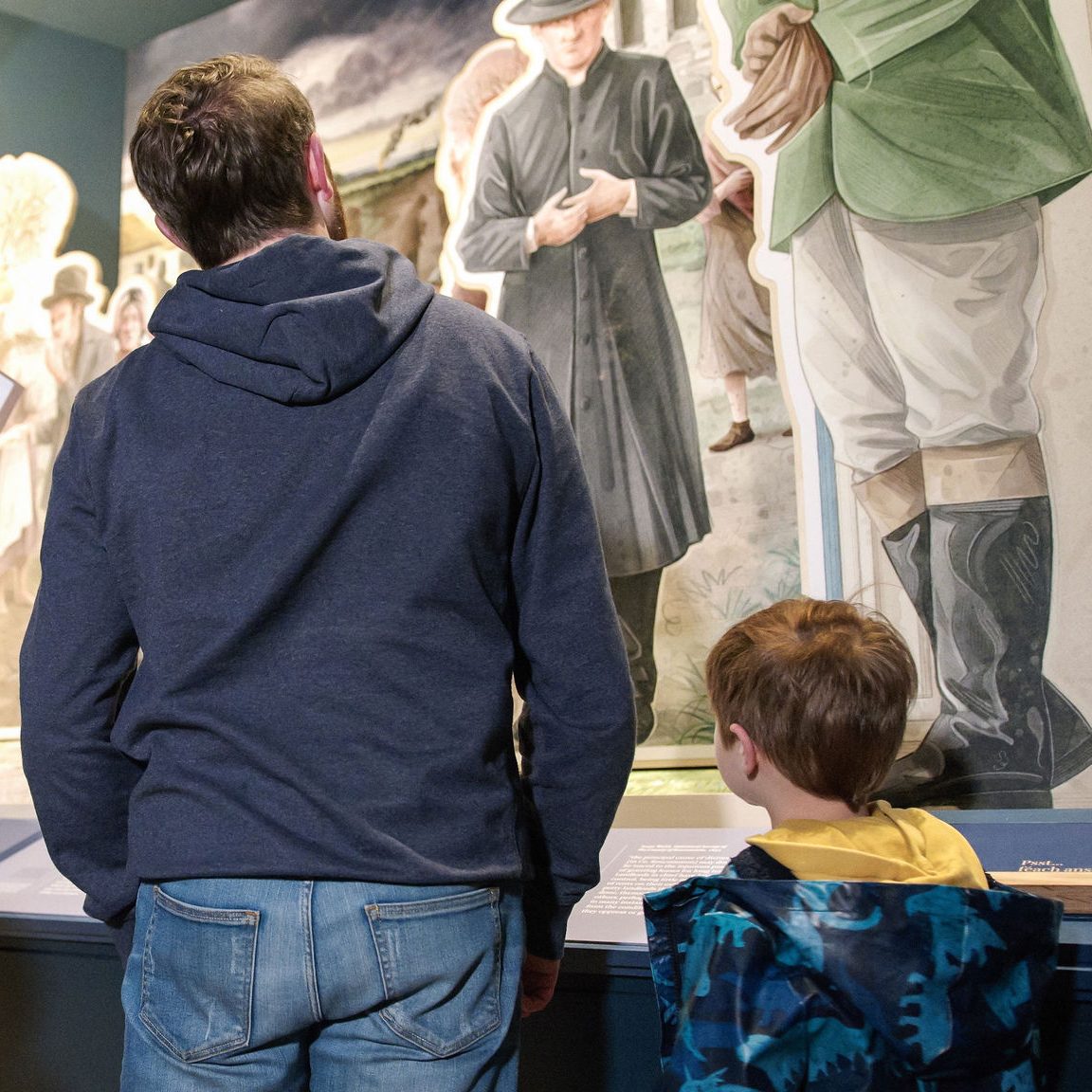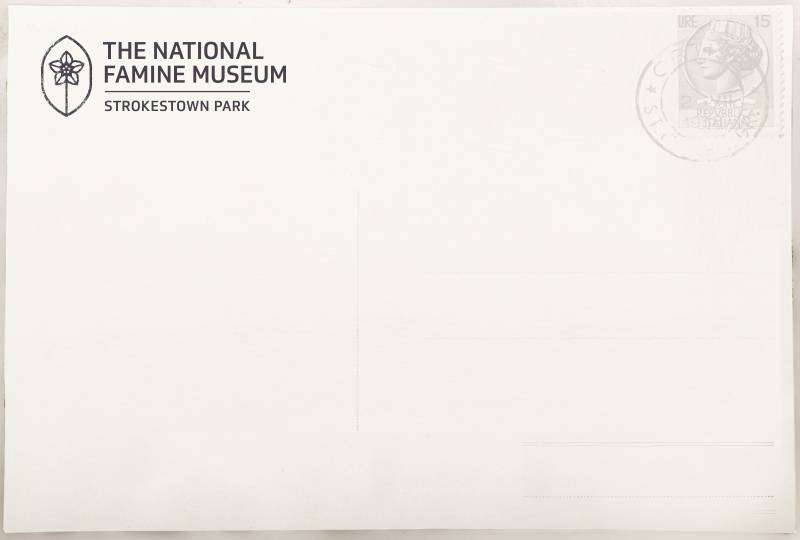Explore the parallel lives of Strokestown Park’s aristocratic landlords and their tenants during the Great Irish Famine at our state-of-the-art National Famine Museum.
In this compelling, highly interactive new museum, breathaking local and national stories from this tragic period in Ireland’s past are brought dramatically to life.

Take a Self-Guided Tour
A mixture of imaginative scene-setting and innovative audio, audio-visual, and touchscreen resources – as well as our family activity guide – help to make a museum visit a fascinating, immersive experience for people of all ages. Our audio guides are available in six languages: English, Irish, French, Spanish, German and Mandarin.
Encounter the voices of the famine through original documents produced by people whose lives were tied to the Strokestown Park Estate.
Discover what simple everyday objects, from farming tools to worn-out shoes, can tell us about the lived experience of famine at different levels of Irish society.
Learn about the political, social, economic, and environmental factors that played a part in the Great Irish Famine and contributed to its devastating human cost.
See Ireland’s complex past up close
- Explore the tenants’ experience of hunger, eviction, and exile, through voluntary and assisted migration.
- Engage with the landlord’s perspective, his power, dilemmas, and controversial assassination.
- Gain unique insights into a cataclysmic disaster that changed Ireland forever, creating a diaspora of Irish emigrants, forced to leave their homeland due to hunger, many of whom did not survive the harrowing journey.
The Scale of the Great Irish Famine
The Great Irish Famine of the 1840s is considered to be the single greatest social disaster that occurred in 19th-century Europe.
Famine had troubled countries across Europe in the 1830s and early 1840s, but – from 1845 to 1847 – it devastated the island of Ireland.
Over 2 million people – almost a quarter of the entire population – either died or emigrated in what became known as ‘An Gorta Mór’: the Great Hunger.
At the National Famine Museum this tragic chapter of Irish history is explored through the prism of dramatically different parallel lives.
“Our families are really and truly suffering in our presence and we cannot much longer withstand their cries for food. We have no food for them, our potatoes are rotten and we have no grain”.
Tickets
Book tickets for the National Famine Museum and Strokestown Park House
Why is Ireland’s National Famine Museum Located at Strokestown Park?
The elegant and serene landed estate at Strokestown has played a pivotal role in Ireland’s national famine story and how it is remembered.
Major Denis Mahon who owned Strokestown Park and managed its estates was the first landlord to be assassinated during the famine. The meticulous records he kept of the period are a resource of international importance. They are also the source of many of the compelling stories told in the National Famine Museum, which is managed and cared for by the Irish Heritage Trust.

Sharing Stories
Beyond the museum, we promote understanding of the Great Irish Famine in many innovative ways:
- The National Famine Way – a waymarked trail – traces the route of 1,490 emigrants who left Strokestown together in 1847.
- The Famine Way education pack supports learning about the famine, as do our on-site education activities.
- The Great Famine Voices roadshow tracks down and retrieves the stories of the 1,490 and Irish emigration.
- Our Famine Summer School is an international forum which facilitates the sharing of knowledge, expertise, and research.







